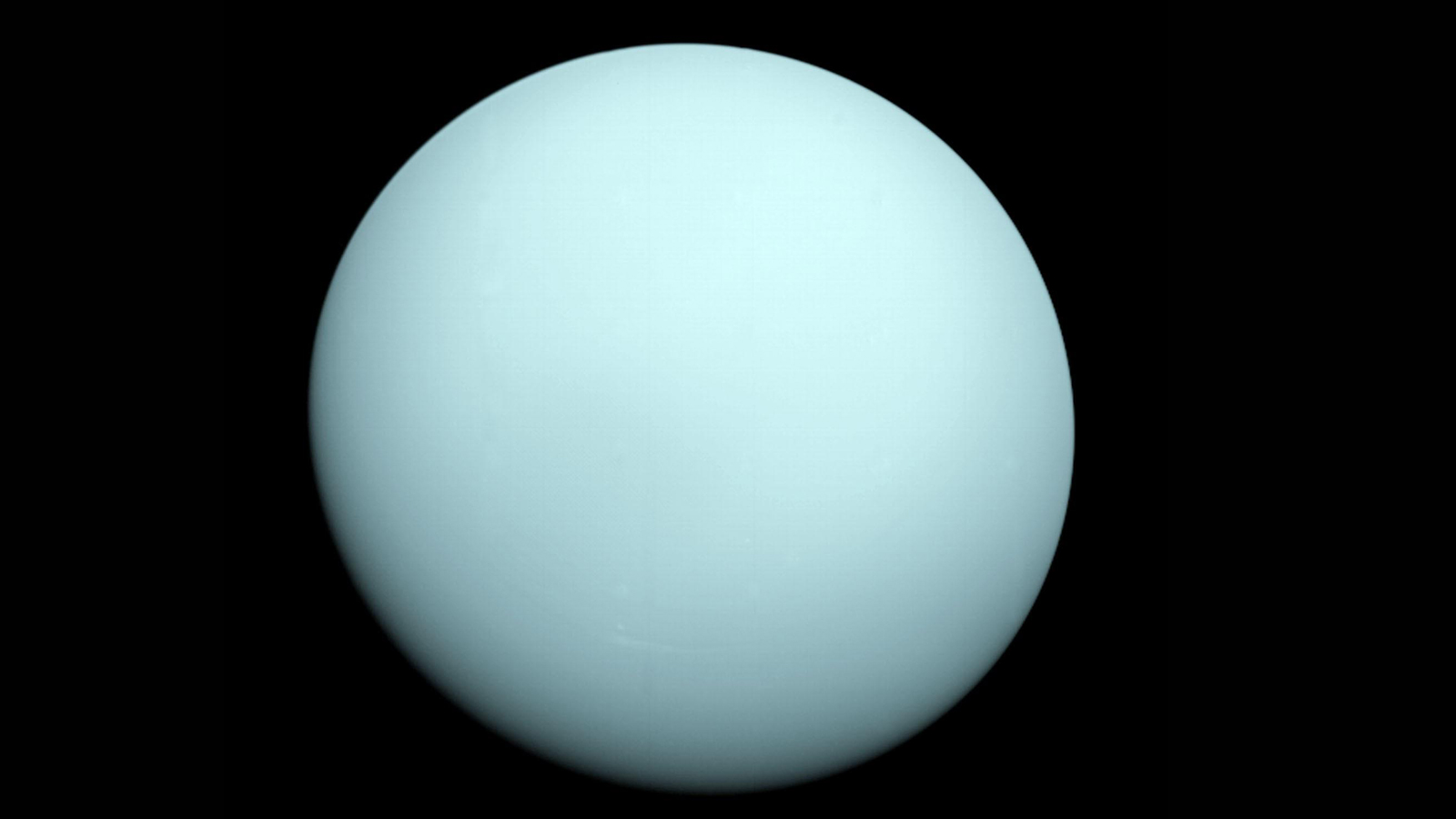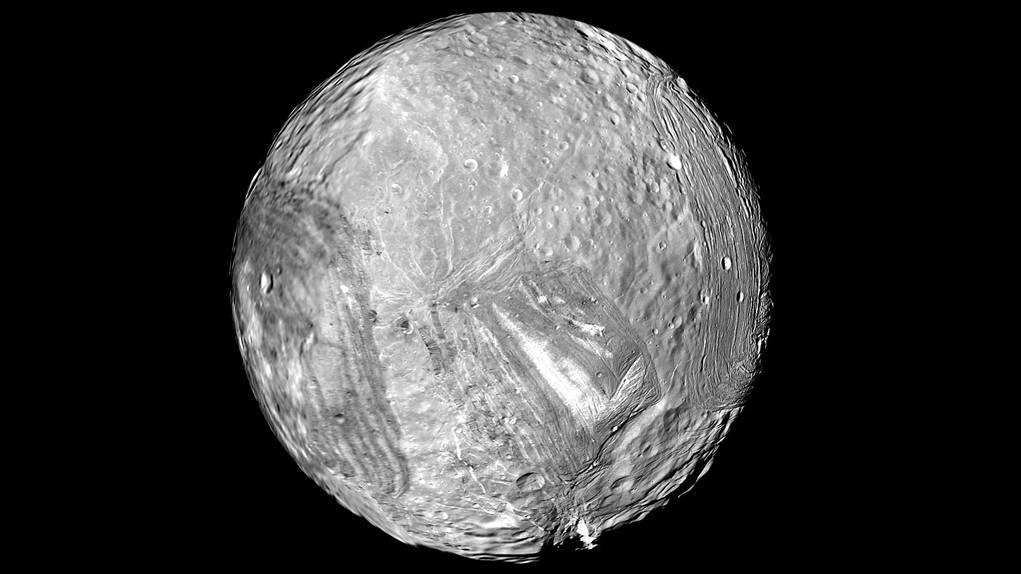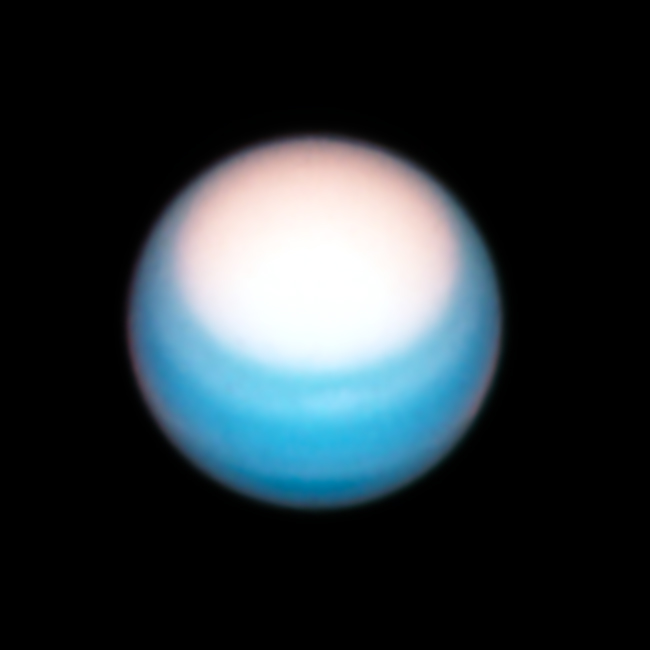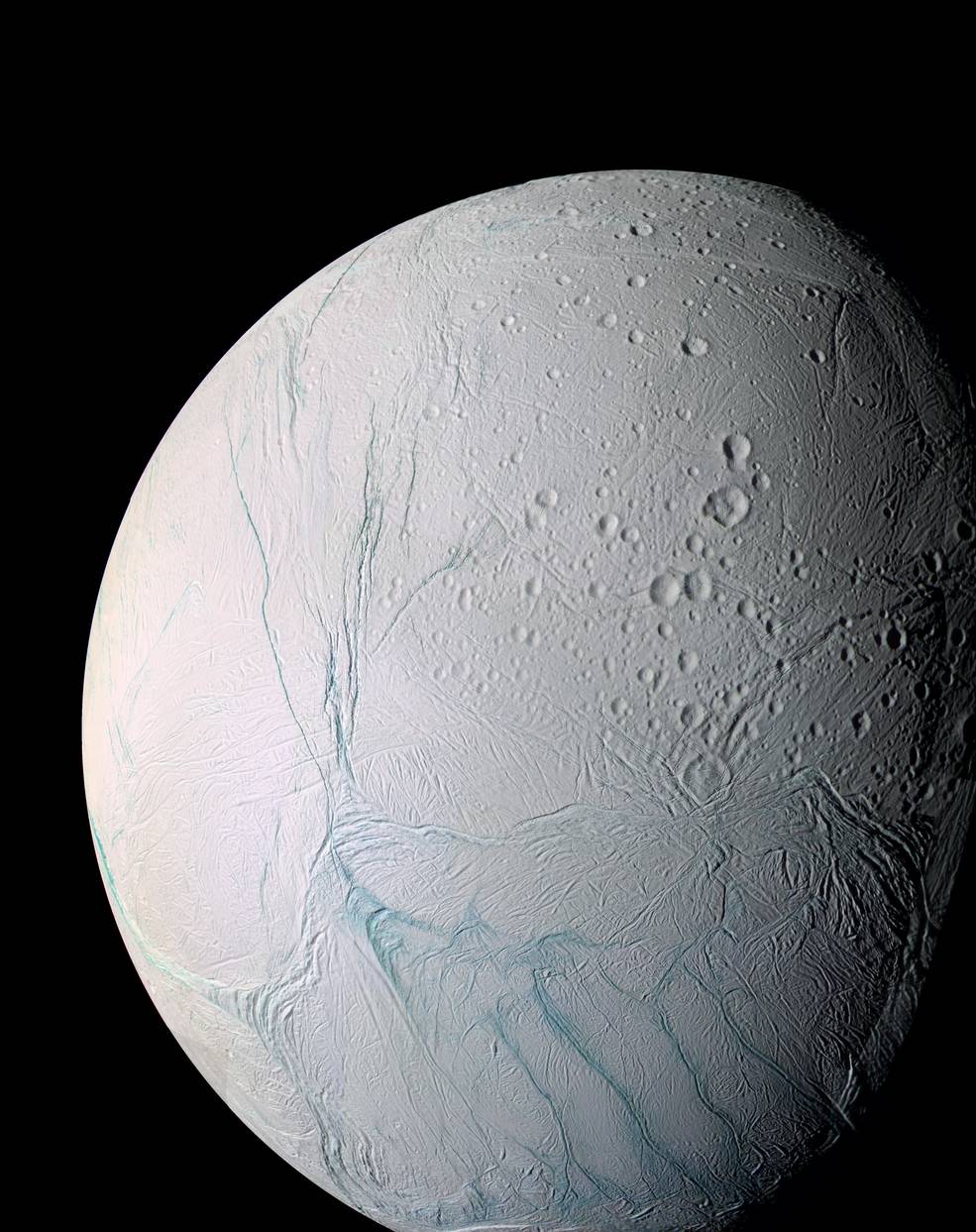
In a long-awaited report released Tuesday, a panel of planetary scientists recommended NASA prioritize development of a flagship robotic mission that would orbit Uranus, a distant world with 27 known moons that has not been explored since a fleeting visit by the Voyager 2 spacecraft 36 years ago.
The planetary science decadal survey report, released by the National Academies of Sciences, Engineering, and Medicine, provides NASA with a roadmap for the next decade of solar system exploration. The U.S. agency has a long-standing policy of following the recommendations from the once-in-a-decade reports.
Scientists said the second priority for NASA’s planetary science program should be the development of a robotic mission to orbit and land on Saturn’s moon Enceladus, which previous missions have shown harbors an ocean of liquid water buried under a global ice sheet.
The Uranus and Enceladus missions received rankings above other mission concepts considered by the decadal survey panel. NASA prepared 11 mission concept studies for review by the decadal survey committee, and the panel determined six of the concepts had “exceptional scientific merit.”
Those concepts included the Uranus Orbiter and Probe and the Enceladus Orbilander, which received top ranking. Other concepts studied by the decadal survey committee included landers to go to Jupiter’s moon Europa and the solar system’s innermost moon Mercury, a flagship mission to orbit and land on Venus, and a robotic mission to orbit Neptune and repeatedly fly by its planet-sized moon Triton.
The Venus flagship mission was judged to be the most technically risky and expensive of the bunch. An independent cost assessment from the Aerospace Corp. determined the Uranus Orbiter and Probe mission would cost about $4.2 billion, and the Enceladus orbiter and landing mission would come in at $4.9 billion.
“The UOP (Uranus Orbiter and Probe) would conduct a multi-year orbital tour to transform knowledge of ice giants in general, and the Uranian system in particular, through flybys and the delivery of an atmospheric probe,” the National Academies said in a press release. “The report states that UOP would be programmatically complementary to the flagship missions underway, and that a launch within the 2023-2032 decade is viable on currently available launch vehicles.”
“The (Enceladus) Orbilander would search for evidence of life on Enceladus, a moon of Saturn, from orbit and during a two-year landed mission that would perform detailed studies of fresh plume material originating from Enceladus’ interior ocean,” the National Academies said.
The Uranus mission could launch on a commercial heavy lift rocket, while the Enceladus mission would require a more powerful super-heavy lift launch vehicle, such as NASA’s Space Launch System, scientists wrote in the decadal survey report.
“But options are available for launch on a heavy lift vehicle with the inclusion of a solar-electric propulsion stage and/or a Jupiter gravity assist (if available),” scientists wrote. The document did not mention any commercial super-heavy rockets, like SpaceX’s Starship vehicle currently in development.

The most recent decadal survey report, released in 2011, recommended NASA pursue a Mars Sample Return mission and a robotic explorer to study Jupiter’s moon Europa.
NASA responded by beginning development of the Perseverance rover, which launched in 2020 and landed on Mars last year to begin collecting rock samples for return to Earth in the early 2030s. The Europa Clipper mission is now being built at the Jet Propulsion Laboratory in California for launch in 2024.
Another section of the decadal survey report recommended NASA “fully support the development, timely launch, and subsequent operation of the NEO Surveyor,” an infrared telescope to detect asteroids that could threaten Earth. NASA’s planetary defense program launched its first space mission last November, a project called the Double Asteroid Redirection Test that will attempt to demonstrate the ability to nudge a space rock off its trajectory in a targeted collision with a small asteroid later this year.
After DART and the NEO Surveyor, which is set for launch in 2026, NASA should next focus on demonstrating its ability to develop a “rapid-response” mission to fly by a relatively small near-Earth asteroid, testing capabilities to better prepare for a short-warning time asteroid threat to Earth.
“This report sets out an ambitious but practicable vision for advancing the frontiers of planetary science, astrobiology, and planetary defense in the next decade,” said Robin Canup, assistant vice president of the planetary sciences directorate at the Southwest Research Institute, and co-chair of the National Academies’ steering committee for the decadal survey.

The decadal survey report also issued recommendations on NASA’s New Frontiers and Discovery programs, which develop medium-class and relatively low-cost solar system science probes.
The New Frontiers missions are cost-capped at $900 million for pre-launch development costs, about one-fifth the cost of a flagship science mission. Development of Discovery-class science missions must cost less than $500 million, according to NASA’s most recent numbers.
NASA solicits proposals from outside science teams for each New Frontiers and Discovery mission, while development of flagship missions is typically managed at a NASA center.
National Academies panels have previously provided NASA with a list of candidate targets for New Frontiers missions, including a comet surface sample return, a sample return from the far side of the moon, a mission to Enceladus, a Saturn atmospheric probe, a Venus descent probe or lander, a spacecraft to explore Jupiter’s volcanic moon Io, and a lunar geophysical network to probe the moon’s internal structure.
Scientists in the decadal survey reported recommended NASA amend the list of New Frontiers mission targets to include:
• A mission to orbit and land on a Centaur asteroid
• A mission to return samples from the dwarf planet Ceres
• A comet surface sample return
• A mission to conduct multiple flybys of Saturn’s moon Enceladus
• A lunar geophysical network
• A Saturn atmospheric probe
• A orbiter to Saturn’s moon Titan
• A Venus In Situ Explorer
The lunar sample return mission and the Io volcano explorer dropped off the list. But those science objectives could be achieved by NASA’s Artemis program, which aims to send astronauts back to the moon, and through the lower-cost Discovery solar system science program.
The National Academies research panel recommended NASA continue selecting two Discovery missions in each round of proposals, a practice the agency started in recent years after previously choosing only one winning proposal per round.

Scientists writing in the decadal survey report expressed their continued support of NASA’s Mars program, adding that the agency should prioritize a “Mars Life Explorer” mission, which would seek signs of existing life on the Red Planet. The multi-launch Mars Sample Return program, begun with the launch of the Perseverance rover, is focused on searching for evidence of past life on Mars.
NASA has been working on early stages of planning a Mars Ice Mapper mission in partnership with Canada, Japan, and Italy, but the White House proposed canceling that project in the fiscal year 2023 budget request released last month.
The decadal survey also offered recommendations for NASA’s science division to work with the agency’s human spaceflight directorate on research objectives for astronauts landing on the moon. Scientists recommended NASA develop a rover called Endurance-A, which would land on the moon aboard a commercial spacecraft and collect “a substantial mass of high-value samples across a long traverse” before delivering the specimens to astronauts on the moon, who would return them to Earth for analysis.
Email the author.
Follow Stephen Clark on Twitter: @StephenClark1.
from Spaceflight Now https://ift.tt/eaCp1lM
via World Space Info







0 comments:
Post a Comment